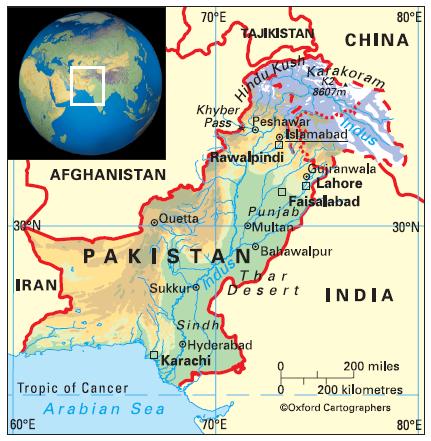Education in Pakistan
Joined Commonwealth: 1947 (left in 1972, rejoined in 1989) 
Population: 180,808,000 (2009)
GDP p.c. growth: 1.7% p.a. 1990-2009
UN HDI 2010: world ranking 125
Net primary enrolment: 66.4% (2009)
Net secondary enrolment: 32.7% (2009)
Gross tertiary enrolment: 5.2% (2008)
Adult literacy: 55.5% (2008)
Public spending on education was 2.7% of GDP in 2009. There are five years of compulsory education starting at age five, and seven years of secondary comprising cycles of three and four years. Net enrolment ratios are 66.4% for primary and 32.7% for secondary, and gross enrolment ratio for all levels combined 42% (2009). The pupil-teacher ratio for primary is 40:1 (2009). Some 60% of pupils complete primary school (2008). The school year starts in April.
About 5.2% of the relevant age group is enrolled in tertiary education (2008). In May 2011, the Higher Education Commission recognised 129 degree-awarding institutions, 73 in the public sector. Allama Iqbal Open University was established in 1974, the first open university in Asia. Fatima Jinnah Women’s University, Rawalpindi, opened in 1998 and was Pakistan’s first university exclusively for women. The female-male ratio for gross enrolment in tertiary education is 0.43:1 (2008). Literacy among people aged 15-24 is 71% (2008). There is an extensive literacy programme.
The Idara-e-Taleem-o-Aagahi Public Trust’s project entitled ‘Addressing the Vulnerable through Quality Learning and Protection – Drop-in Centres for Rag Pickers and Child Domestic Labour’ was selected as a finalist in the 2009 Commonwealth Education Good Practice Awards. The idea is to give child labourers access to non-formal education, as well as protection from being victims of sexual trafficking and violence. By January 2009 almost 5,000 children had benefited from this project which had expanded to many states in Pakistan.



